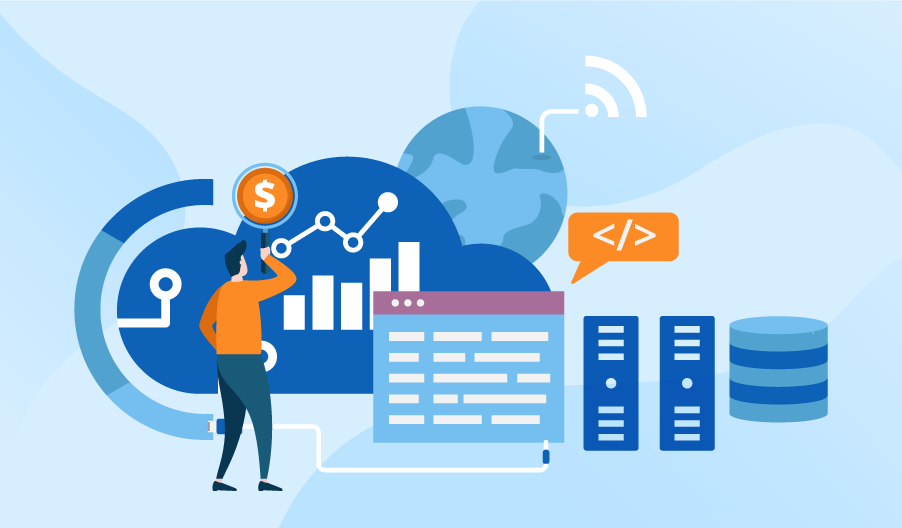Cloud Computing: Hidden Costs
It is marvelous how the cloud computing idea struck the modern world. Out of the blue it came and claimed superiority over the existing methods and tools. There has been so much fuss about cloud computing lately and still enterprises are sometimes reluctant to move on, motivating such decision by security issues. Clearly, introducing new methods and moreover – paradigms is not a fast and easy process. The risks associated with a new technology are always high, but also is the ROI.

The benefits it offers
As I see it, the two major advantages that Cloud Computing is claimed to have the lowered costs and flexibility concerning the equipment issues. Indeed, using the cloud services you can cut on the equipment and maintenance costs. All in all, the customer is not supposed to be concerned with the staff and costs of the physical equipment.
The costs – hidden and obvious
When using services of a cloud provider you can happily forget about buying servers and paying your administrators. All the associated costs, such as room rental, electricity etc., are washed away. So far the skyscape is rather bright, isn’t it?
Nevertheless, the trouble comes when you do not expect it. As the information is stored in a virtualized memory and the performance is built up by a pool of servers, you may find calculating the needed server capacity rather tricky. So, as a solution it is advisable to over-plan it a little bit, and cut down when everything is stable. Even though erroneous planning can be a problem, the cloud space is highly flexible – so you can ramp up the resources pretty easy, which is definitely not so swift when dealing with hardware.
The previous paragraph describes the obvious benefit of a cloud solution. Still there are some hidden (or forgotten) expenditures you cannot avoid. When dealing with enterprise cloud solutions available today, the general description for them will be “basic”. The services that are offered are can be rather limited compared to commercial non-cloud packages available. So, if you are definitely for moving your company to the cloud you will need to think about finding or ordering an add-on (or may be several) that will suit your business. At this point the support issue becomes very important. If the provider you are using doesn’t have an established and well-managed support service, you are likely to face some challenges you would have to solve yourself.
But the updates for the Cloud solutions are quick to come, while most likely you would need to wait not less than half a year before an update for your non-cloud solution is provided. With the chart below, I summarized my view on the cloud computing costs. Your comments are welcome.
| Cloud | Non-cloud | |
| Equipment | + | |
| Installation | +/- | + |
| Migration | + | + |
| Maintenance | +/- | + |
| Support | + | + |
| Training | + | + |
| Updates | + | + |
| Add-ons | + |
The risks
One of the strongest arguments against cloud computing today is security issues starting from occasional breakdowns (like the Amazon issue that put down some of the widely used services) or something like the recent government orders regarding confidential information disclosure. Some of those issues are hard to avoid at least at the present moment. Security level can be increased by various means, but this needs additional funding (see add-ons line in the chart).
Should you have your cloud?
”To have it or not to have it?” The choice is a hard one – but it is up to you. Cloud solution is almost a fairytale idea for a SME. It gives your company hardware and software flexibility, allows costs savings. And if the company faces challenges on the way to cloud computing, the employed stabilization mechanisms are quite smooth. To make your cloud solution even more attractive, you can attach additional services, such as customer support, customization, maintenance, etc. And it is where we can help. For further information you can check the links below.


